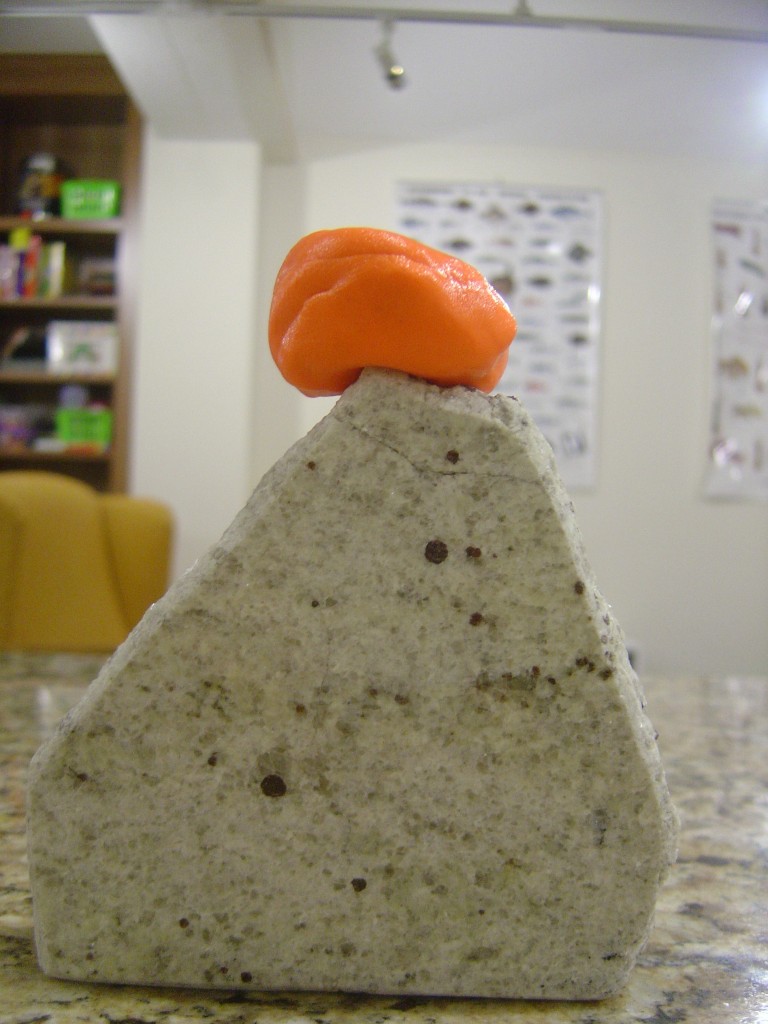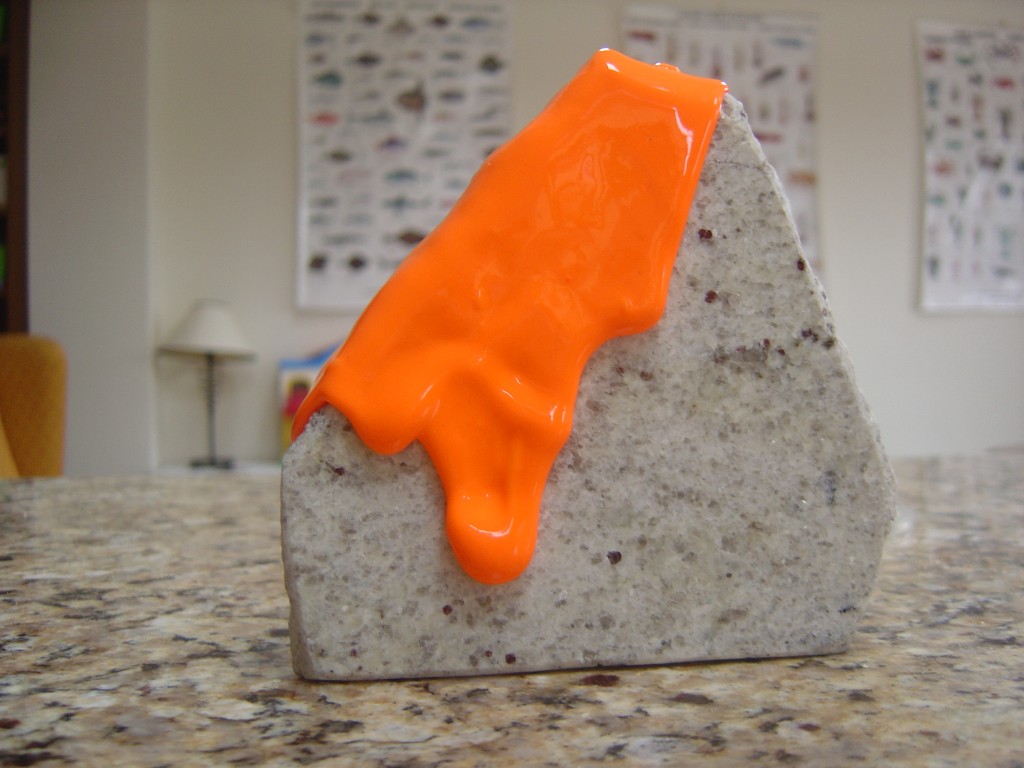“Wibble wobble, wibble wobble, jelly on a plate” Childrens’ rhyme.
To understand the geology of mountains, you need to know how they are built, which means you need to know how rocks deform. I have a tendency to throw phrases around, so I want to define some of them properly. Also I’ve bought a new toy I’d like to play with.
Rheology is the study of the flow of matter. A understanding of a rock’s rheological properties tells us how it behaves when a force is applied to it.
The trouble with rocks is we don’t have much direct experience of deforming them. So let’s start with jelly (or “jello” as most of you know it). If you put a big pile of jelly (not jam, jelly) on a plate and push it, it moves (wibble) and then moves back (wobble). It may then take a while to settle back to exactly where it started (wibble wobble). Once you get tired of poking, stick a spoon in it and eat some. Notice that the pieces break off with a clean sharp edge.
The properties I’ve described are those associated with elastic materials. If you apply a force to the material, it changes shape but returns to its original shape when the force is removed. If you apply a larger force it will permanently change its shape. Apply a large enough force and it will fracture.
Rocks as we know them behave like this. Earthquake waves can be thought of as little wibble-wobbles moving through elastic rock. Apply enough force to rock and it will fracture – if they are big we call these fractures faults.
But what happens if you leave jelly out in the sun, or make it with too much water? It starts to collapse under its own weight. It doesn’t fracture but flows, like a liquid. Materials that behave in this way exhibit viscous behaviour. Don’t just think of water, which has low viscosity, think of high viscosity liquids like tar or honey or felsic magma.
So, we have two broad ways in which materials can deform, elastically or viscously. In practice a material can exhibit type of behaviour, under different conditions or different rates of deformation. This hybrid behaviour is know as visco-elastic.
My new toy. I’ve bought some magic putty. It is a material with complicated properties, but for our purposes it shows how a material can have both elastic and viscous rheological properties.
First the elastic behaviours: silly putty is very bouncy. It will fracture too, but this is harder to do. I tried hitting it with a hammer; a word of advice – don’t. Matt Kutcha persisted and got some great video.
The viscous side of things is best expressed in photos. Here’s a nice round piece of silly putty, perched on a slab of Himalayan granite.
Here’s the same blob the morning after. It’s takes a while, but if definitely flows viscously.
How does this apply to rocks? Rocks are (usually) made of crystals which are formed by mineral lattices. The atoms within these crystals are joined together by atomic bonds. Apply a force to them and you can increase the gap between the bonds. Remove the force and the bonds return to their original size. Apply enough force and the bonds break. This explains elastic behaviour.
How to explain viscous behaviour in rocks? Just like jelly, if you heat rocks, or add water they are more likely to flow like a liquid, only very very slowly. Luckily geology has lots of time available. A crystal lattice can deform by crystal plastic mechanisms know as creep (diffusion or dislocation). These are where atoms in the lattice shift one by one (helped by little imperfections). In time, the mineral lattice becomes a different shape, and writ large, the rock has been deformed. Individual grains remain whole so conceptually the rock has flowed like a liquid. This type of deformation in rocks is referred to as ductile. The terms ductile and viscous are often used as synonyms*.
In summary, rocks can behave in an elastic manner, but also in a ductile/viscous way. The question of which rocks behave in which ways, and how this is relevant to the geology of mountains is a matter for another post.
* Note on terminology Viscous/ductile/plastic are terms that seem in practice to be used synonymously as being things different from elastic behaviour. It’s not clear to me which is correct, if any. Viscosity is a measure of the resistance of a fluid to stress whereas plasticity and ductility relate to changing the shape of solids. It seems that ductile deformation is a description of what happens to rocks whereas viscosity comes in where numerical modelling of rock flow is required. Plastic is deformation of materials without fracturing. Or so it seems to me. Anyone who knows more care to comment?
This post is part of my journey into the geology of mountains.



“The July 5 incident is a major factor,” Professor Yang, the director of the Institute for Central Asian Studies at Lanzhou University in northwest China, said in a telephone interview. “It was a watershed. Afterward, Uighur-Han relations have clearly deteriorated. We can’t avoid this problem.”